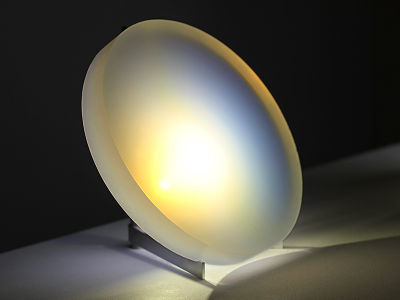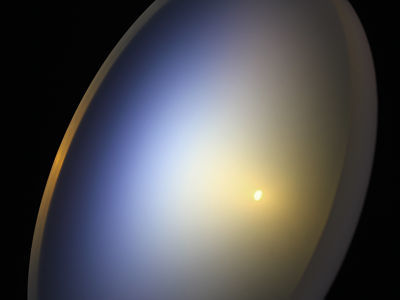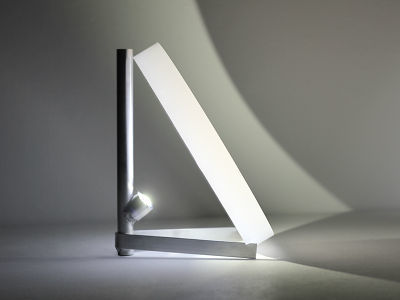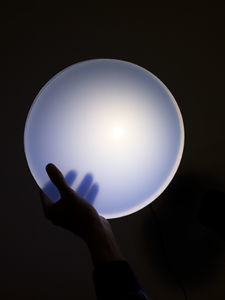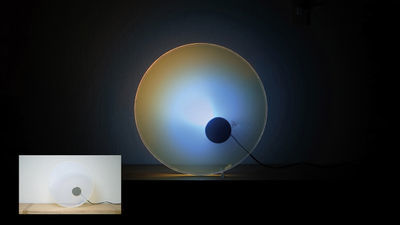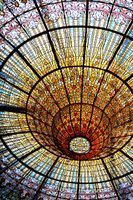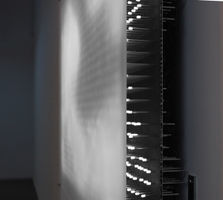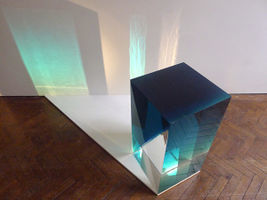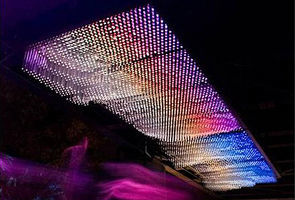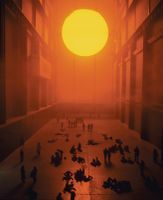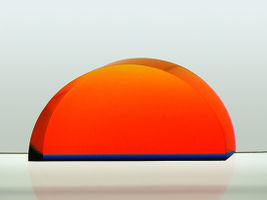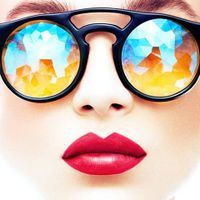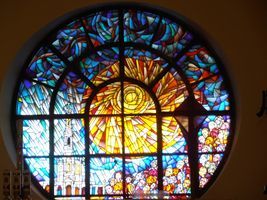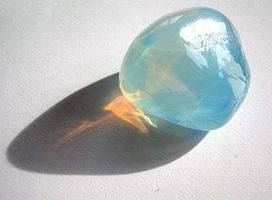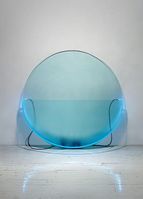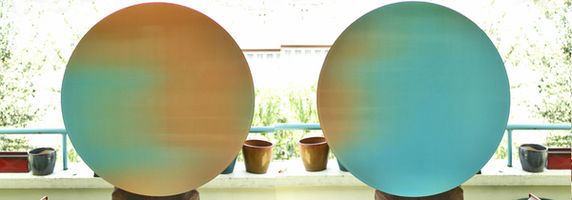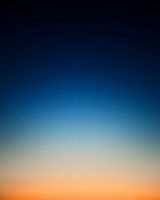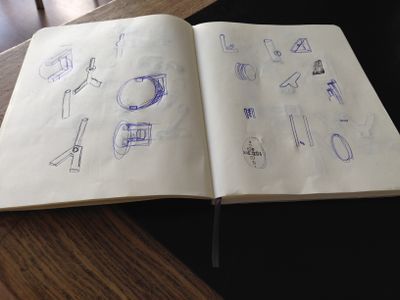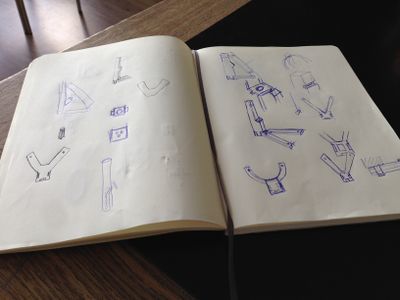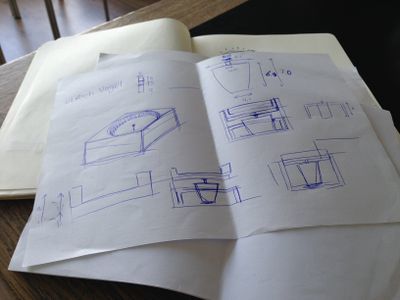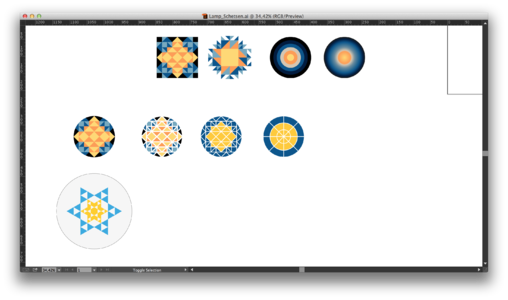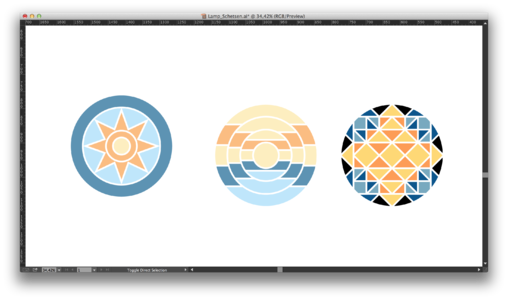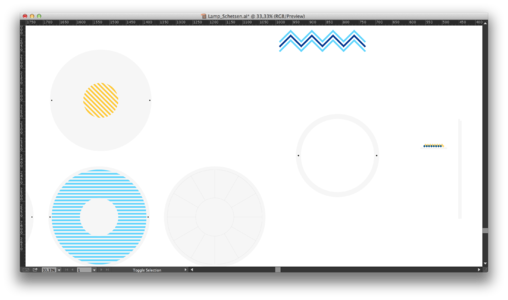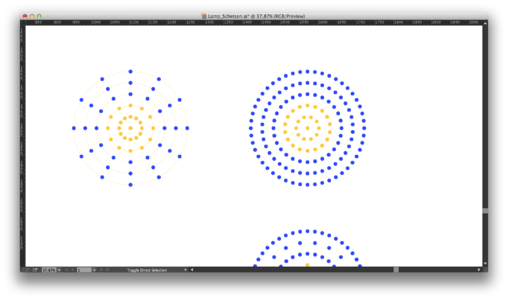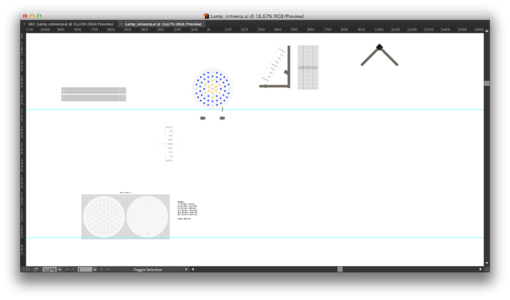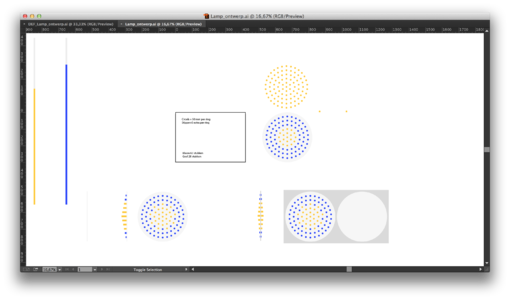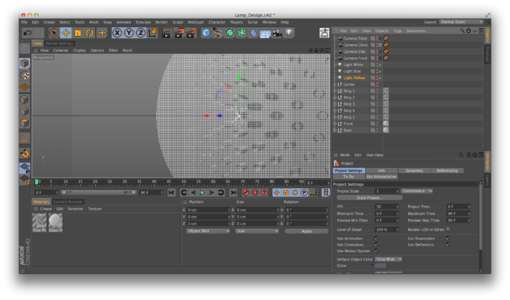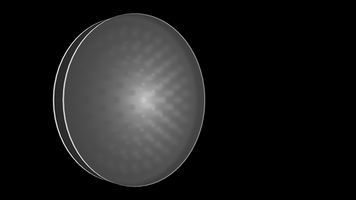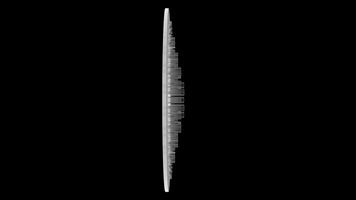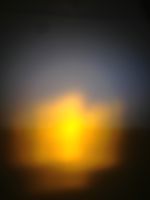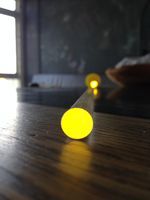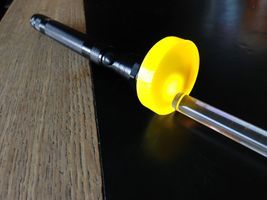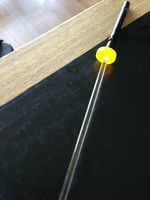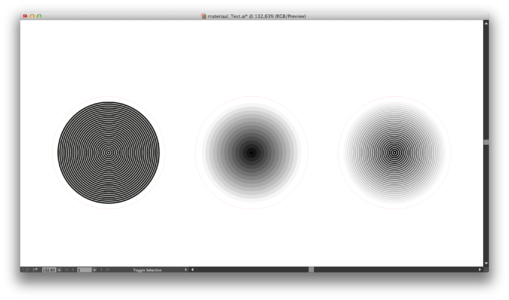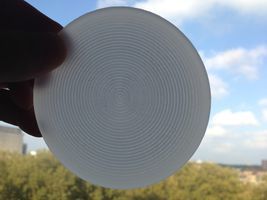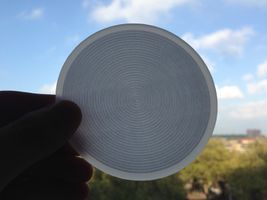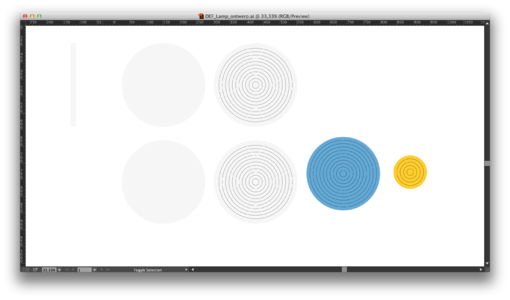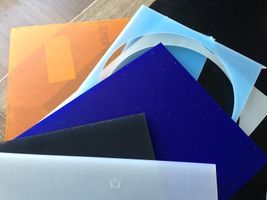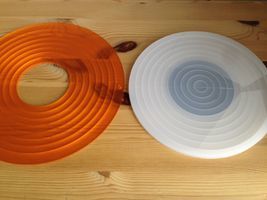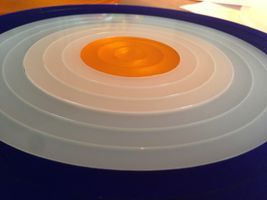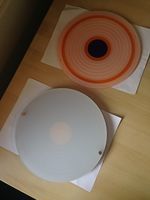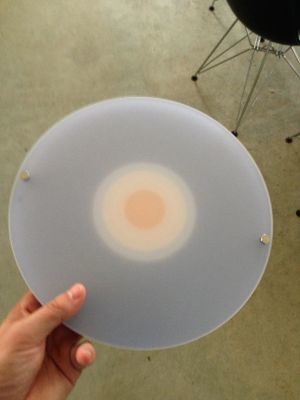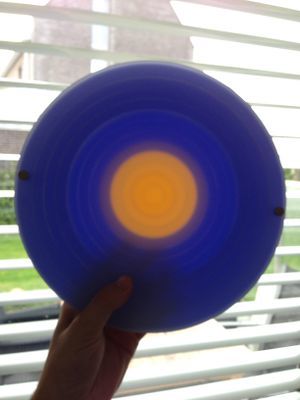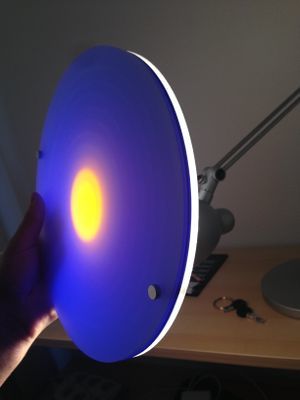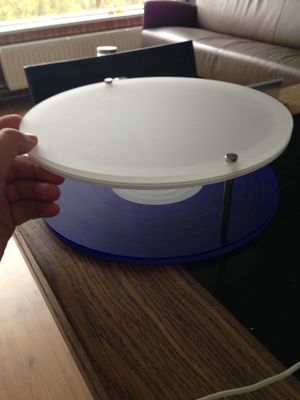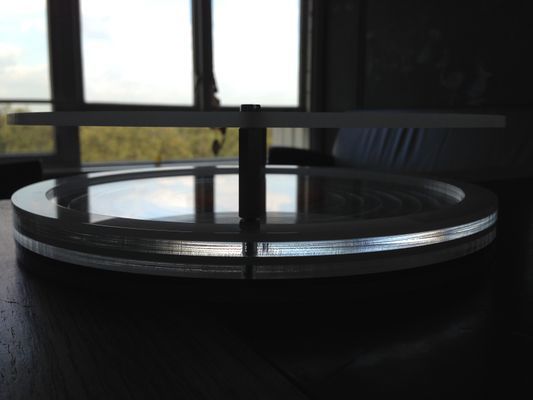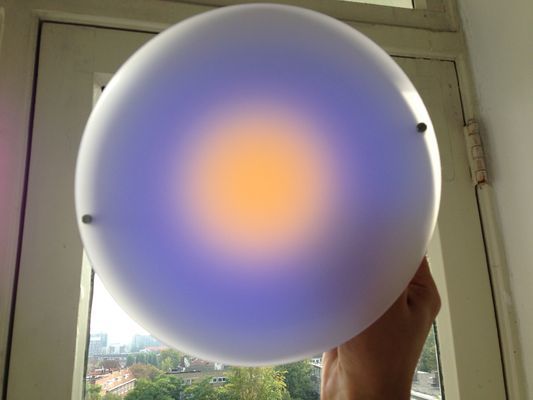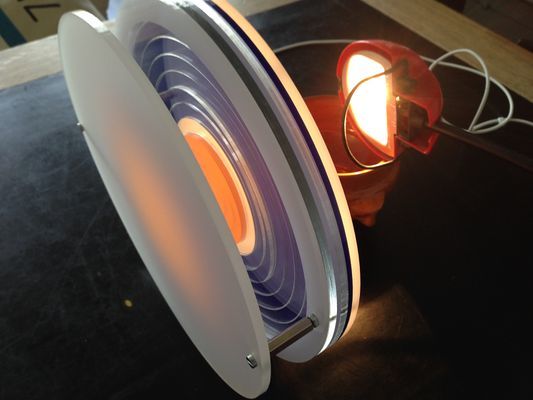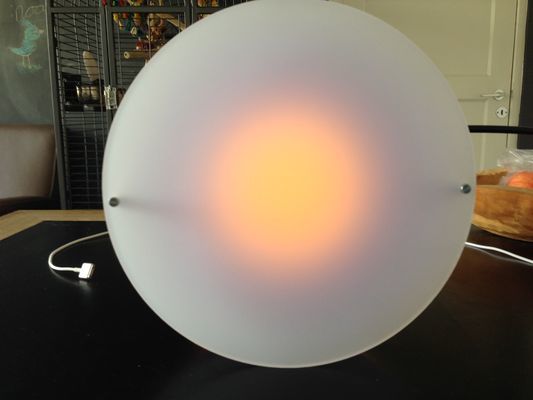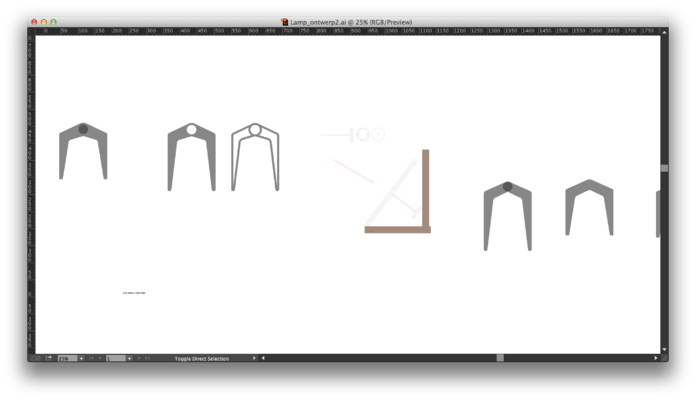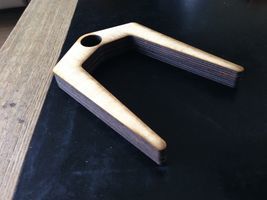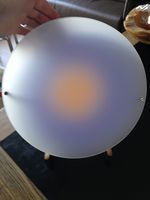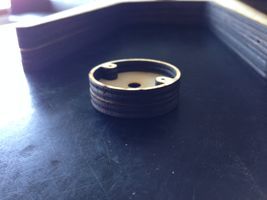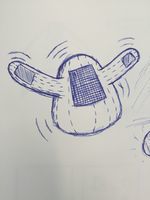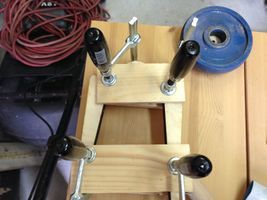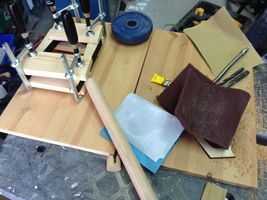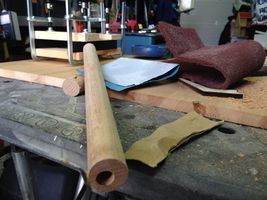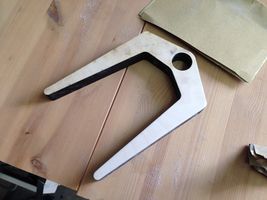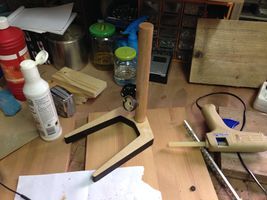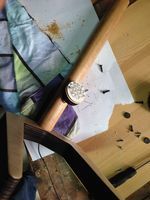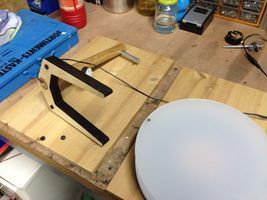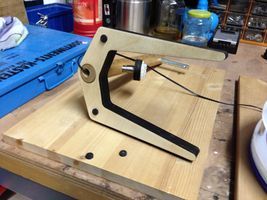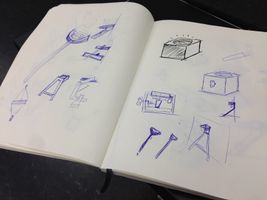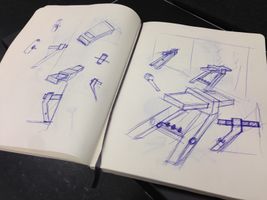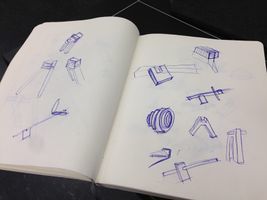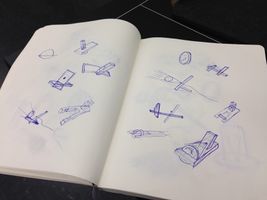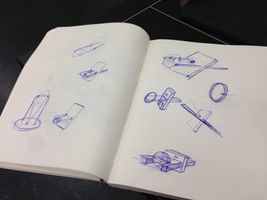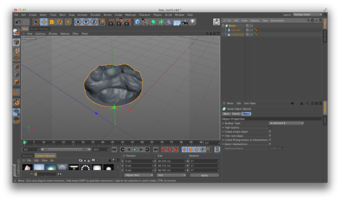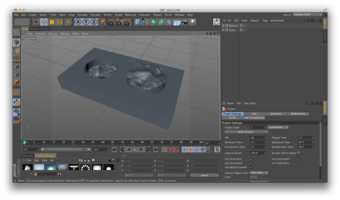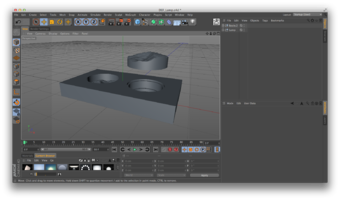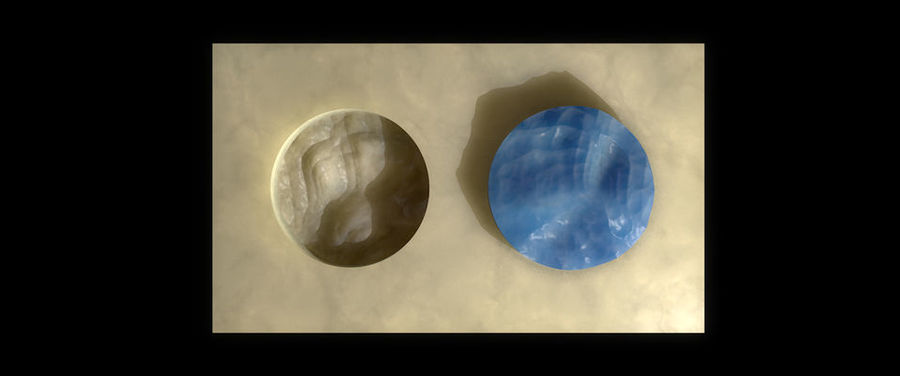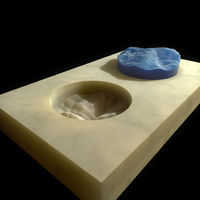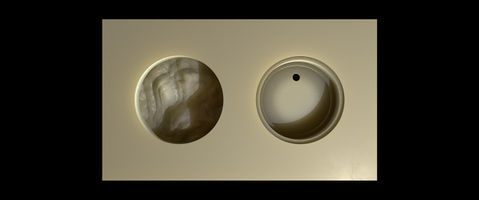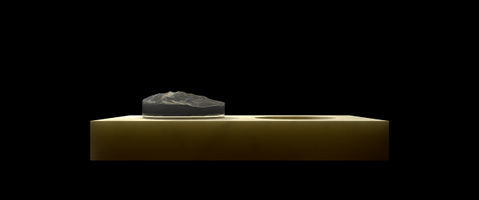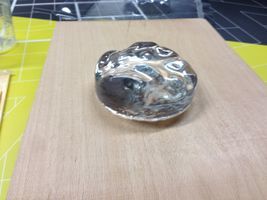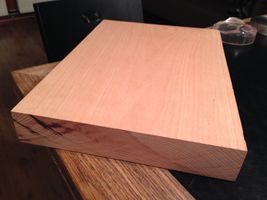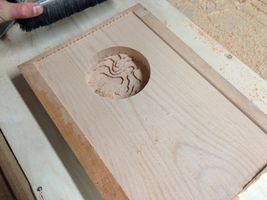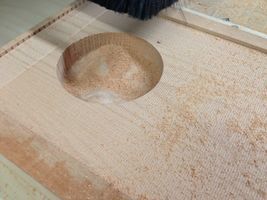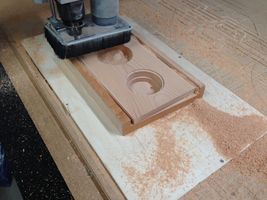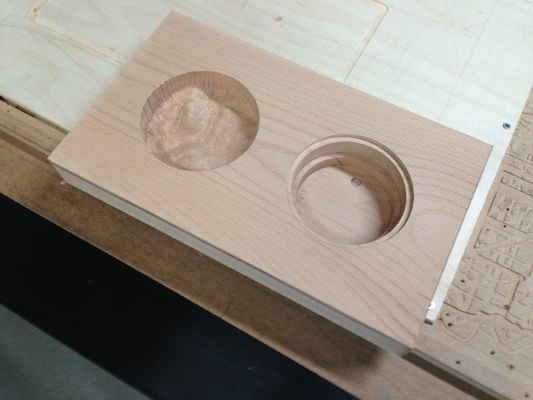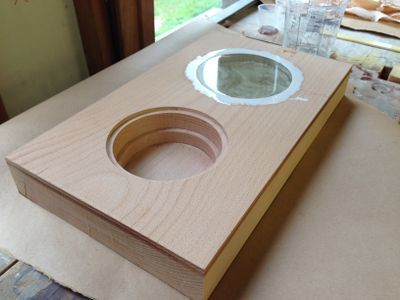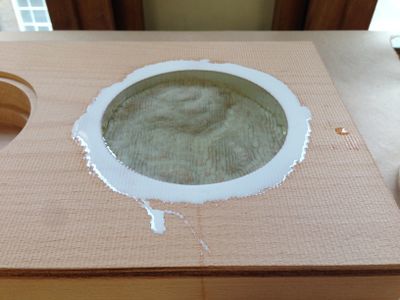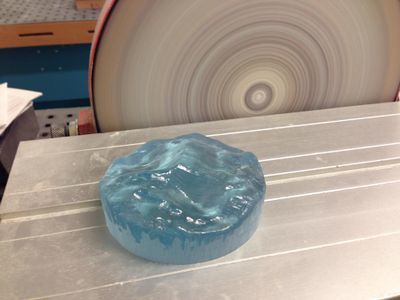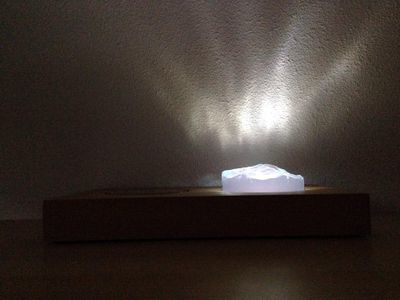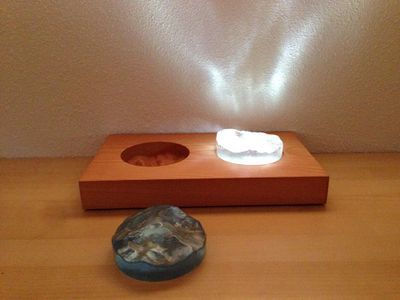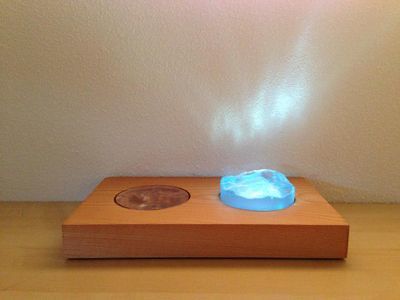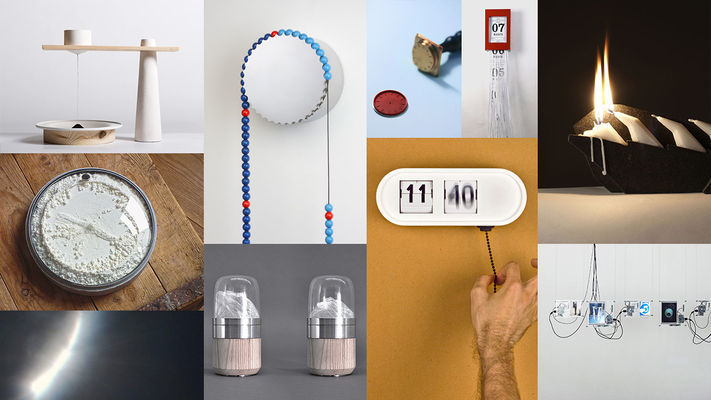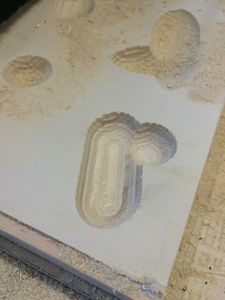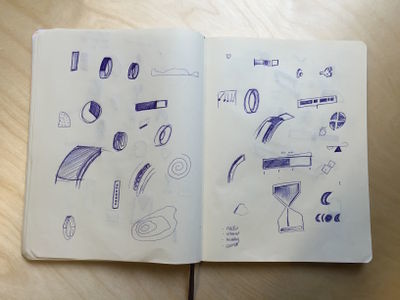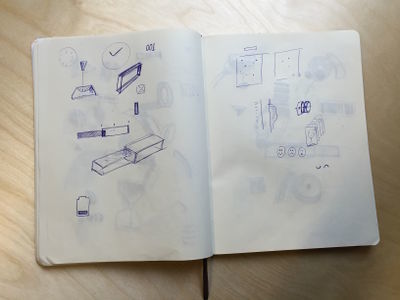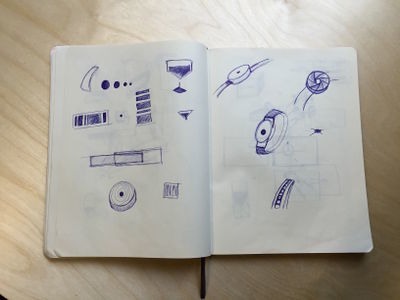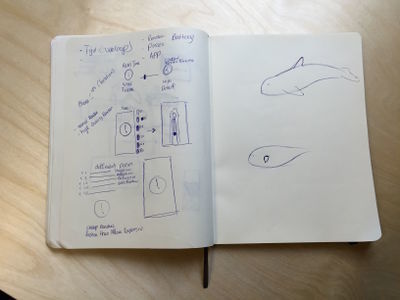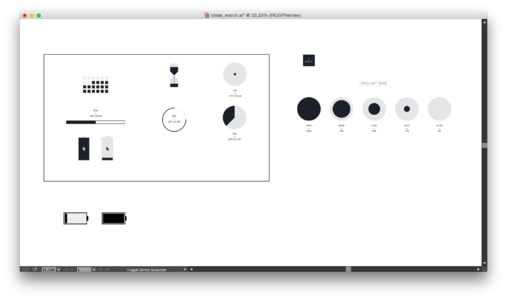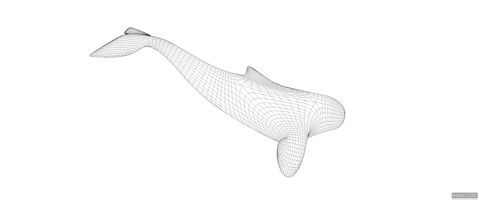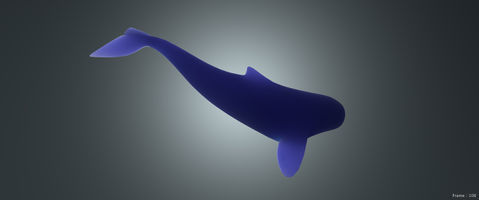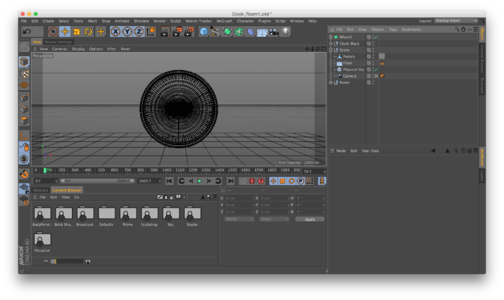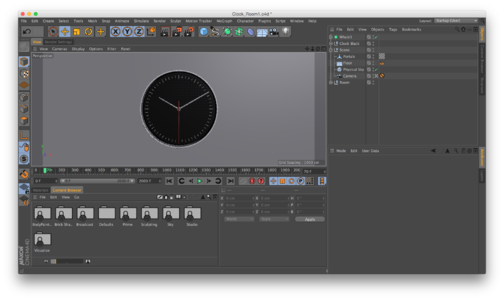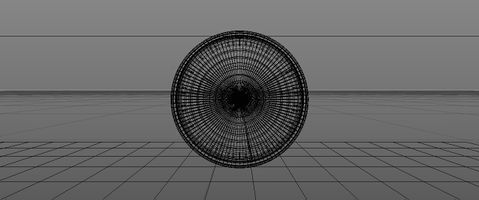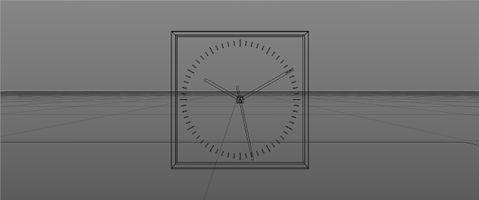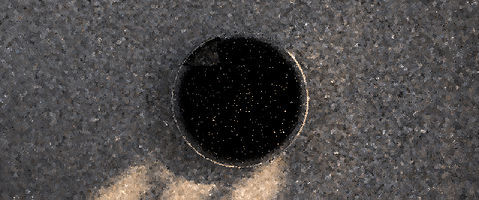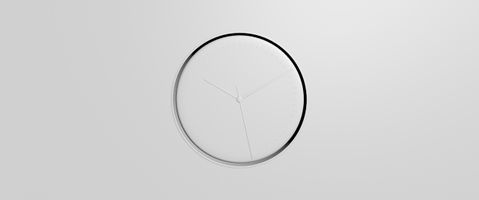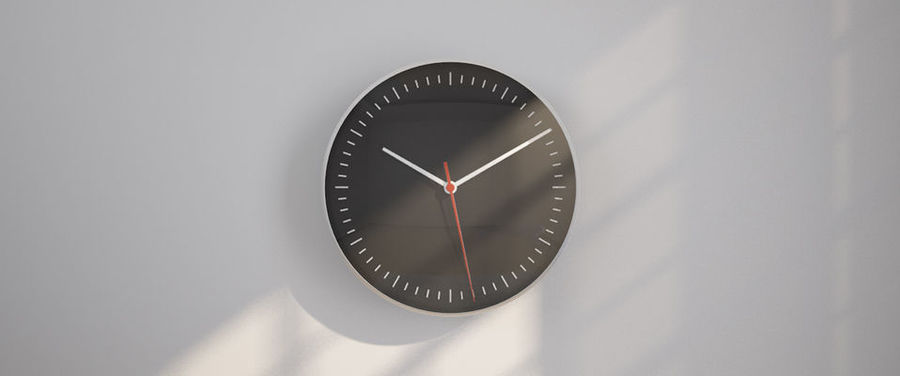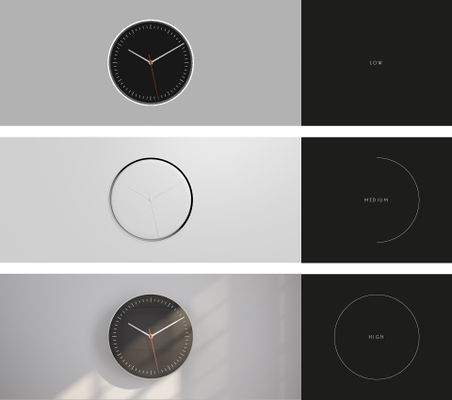User:K.verbeek
Fantastic Forgeries
Object
The object that I have chosen to reproduce for the Fantastic Forgeries project is a contemporary item (2014) named the Blue Sky Lamp by dutch designer Chris Kabel. The main characteristic of this piece is filtering and manipulating light to simulate the colors of the sky on a sunny day.
The actual idea of filtering/manipulating light has a obvious but close connection to me as a audiovisual designer. In fact, film as a medium wouldn't exist without its first and foremost ingredient; light. With this as main focus I hope to find a way to connect the practice Digital Craft to my study.
Blue Sky Lamp 2014
Designer Chris Kabel
Launched in 2014
Materials LED, resin and aluminium
Dimensions 60 / 50 / 30 cm and 35 / 30 / 18 cm
The lamp re-creates the light of the sky on a sunny day. The blue color of the lamp is caused by exactly the same physical effect that happens when light from the sun enters the earth's atmosphere. Special particles in the resin diffuse the cold light of the powerled and disperse the blue lightwaves whilst the orange part of the light beams on.
Conceived for the Winter Anti Depression Show at MARRES in Maastricht the lamp was originally meant to make people happier as it is scientifically proven that light with this blue color brightens people's moods.
www.chriskabel.com
Three main elements of the object
• A minimalistic but functional design.
• Filtering/manipulating light
• Re-creates the colours of the sky and sunlight on a sunny day.
Research
Sky Lighthouse 2014
—
Designer Yoshiki Matsuyama
Launched in 2014
Sky Lighthouse by Yoshiki Matsuyama is a lighting object that embodies the colors of the sky – the blue of the sky, red of the sunset, and all of the colors in between. Natural phenomena is displayed through the color scheme.
www.yoshikimatsuyama.com
Inspiration
To recreate this object I have researched various methods and techniques that have altering light as its essence, with stained glass as main focus for my copy. This old technique incorporates storytelling as well as filtering sunlight, for that reason I believe that it connects incredible well with the original object.
Process
Sketches
Illustrator
Cinema 4D
Experiments
Execution
After some experimentation with different techniques and materials I made the decisions to rebuild the lamp with mixing several layers of coloured acrylic that will imitate the colours of the sky. It will be a abstract representation that is close to the concept of stained glass. This will be combined with with frosted white acrylics to diffuse the light and colours.
Transformation
Transformation.
Process
Sketches
Cinema 4D
Materials
Acrylic Resin & Birch Wood
Execution
CNC Milling Machine
Casting Acrylic Resin
Written Assignment
The craft I practice is Audio Visual Design, which in a nutshell can be defined as everything that has to do with sound and image, whether connected or not. This contains a broad array of approaches from animated fiction to live action documentary films, and mostly a whole lot in between. But each path essentially serve the same purpose; telling a story. This can be related purely to providing information, but also entertainment and even education. In contrast to other crafts, Audio Visual design emphasises on collectively creating the end product, working together is key. Therefore it is important in film to work with a team of individuals and each are mastering their specific craft.
For the last few years my prime interests were largely focused around the creation of live action fiction films, with a strong passion for establishing stylised images, but during my study this has shifted towards a much more motion graphics oriented portfolio. I am drawn to the fact that in case of motion graphics I am able to create highly detailed, and above all precise imagery that give me as a maker much control to manipulate during the process, in order to make a direct visualisation of the ideas I have. Where in live action you are much more dependent on cinematic aspects, from camera movement, lighting to location and even actors.
Although movies as a classic medium primarily uses two basic tools: a camera and lighting, its toolset has vastly expanded during the relatively short time period of its existence. For example the development of CGI and motion capture techniques, allows us as audio visual designers to take much more control in order to create the final image. If that is being compared to film, which actually needs development first to see what the final result is, it can be stated that these tools are a great step forward for the modern filmmaker.
I think the borders for a Audio Visual designer are a someway how a bit fuzzy. Of course there is film as a classic medium, but as stated earlier there are a whole lot of other approaches that can be defined as Audio Visual Design. Truth be told I believe that everything that has been documented or recorded can somehow relate to the practice.
In addition there is a interesting development going on that nowadays that everybody that has access to camera thinks he/she is a filmmaker. This can relate to the rise of cheap equipment and availability of high quality camera’s in cellphones and affordable photo camera’s that can produce high quality video such as DSLR’s. Next to that with the availability of the internet to millions of people, video platforms such as Vimeo give the maker the opportunity, for better or for worse, to make their video’s easily accessible to a large crowd.
Because of this abundance of online video’s I believe today the focus of the actual audience (not general internet user) is more than ever on the quality of the concept. This combined with the growth of online crowd funding opportunities gives an fascinating shift from inaccessible classic movie studio productions to what people actually want to see. This is a development that also translates to what is described as the ‘Golden Age’ of television. Platforms as Netflix offer the audience the opportunity to watch what they want at any given time, which has resulted in a cultural phenomenon called Binge-watching. Where in the past TV was mostly seen as a medium for children, present-day television has moved towards a more mature target audience. Because of the opportunity’s that are created, the line between film and television has become thinner. In the past the two mediums where much more separated than it is today.
Hollywood film directors such as David Fincher known for the movies Fight Club (1999) and The Girl with the Dragon Tattoo (2011) are making the step to actually be responsible for the full aesthetic vision of a TV series, in the case of Fincher House of Cards. It gives the director the opportunity of telling much longer stories over the course of a entire season, which can go deeper into the characters than is commonly achievable in the movies. I feel that film as a medium to tell stories is as much dependable on the actual development of technology as it is not. Some of the ideas you have are narrowed by the availability of technology in order to realise them. Then again in contradiction I believe it can work in your favour to be limited by the possibilities of the medium. This can be used to actually come to more creative solutions in order to go deeper into the story you want to tell.
That being said, technology primarily improves the aesthetic aspect of a movie, I don’t think however that more advanced technology will directly result in better productions, it is much more dependable on the way these are deployed. Simply put a new camera wouldn't automatically result in a better movie, the way you use it in order to tell the story probably will. In case of for example computer generated imagery (CGI), it can even create a distance between the audience and the story if it is set up unbelievable.
Making a good movie relies much more on telling of a good story, than the technology it is being told with.
Tools the Trade
Theme
The theme that I have chosen for Tools of the Trade is time. I want to explore the perception of time and the connection between time and quality.
Tool
For the Tools of the Trade project I want to produce a clock (installation) that is being rendered realtime in front of the viewer. The rendered image is a visualisation of an actual clock, which will allow the viewer/user to set and read the current time. However the user has to make a decision, to display the actual time, this will present the clock instantly in a very low wireframe render. In this case the actual realtime speed is needed otherwise the viewer will not be able to see the time as a result of the messy quality of the render.
Inspiration
Process
Sketches
Illustrator
Cinema 4D
Whale
First I tried to approach the conventional clock on a different way. I had the idea to make a perpetual rending image that would show a swimming whale in unique rendered frames.
Clock
The clock will render according to the preferred settings the viewer.
